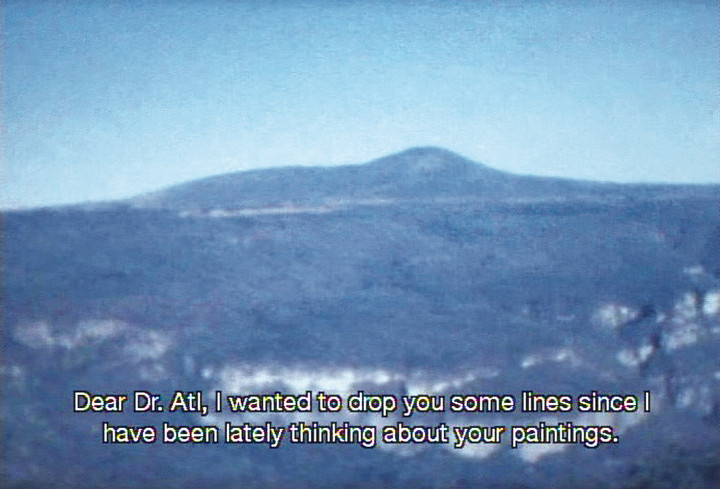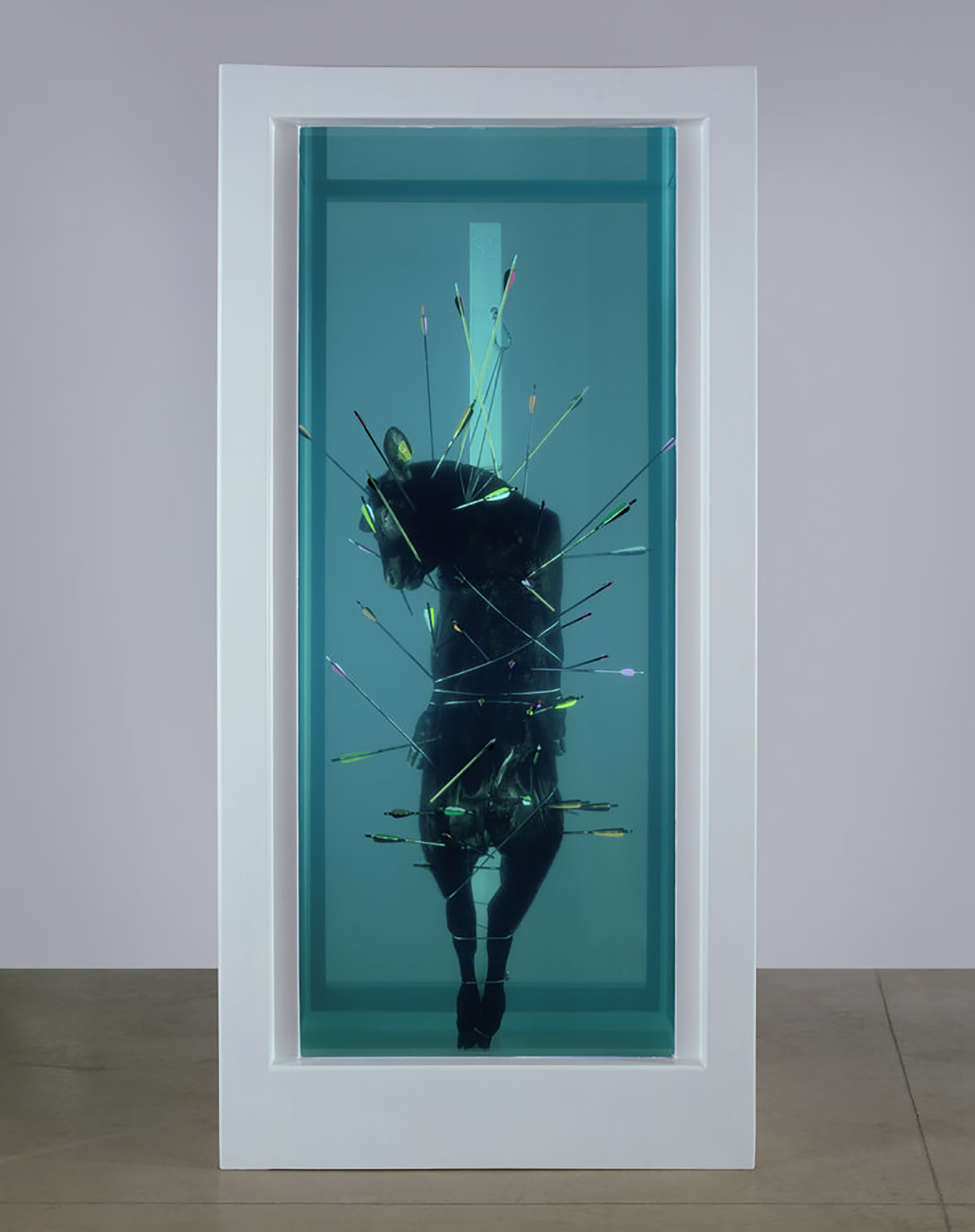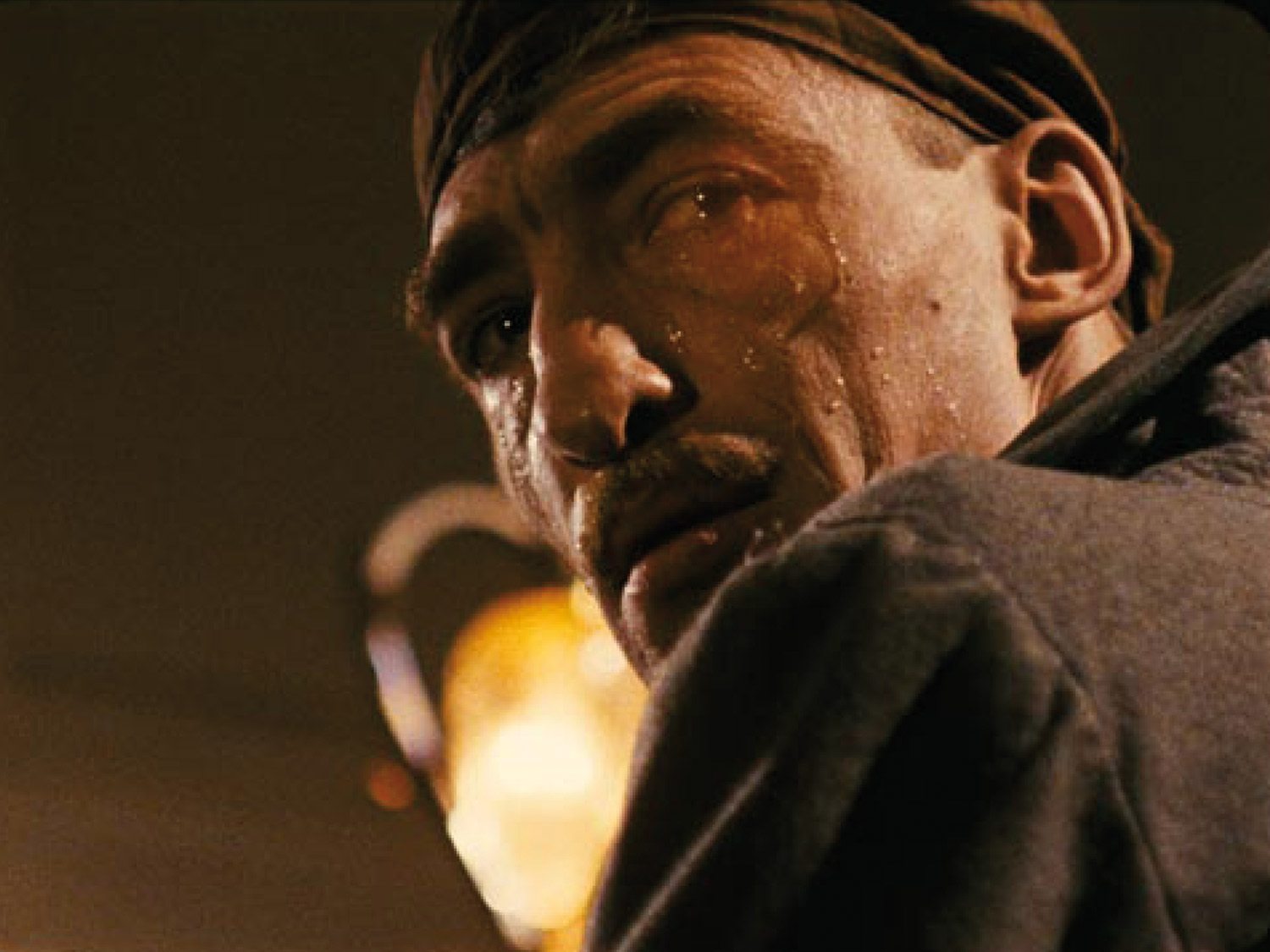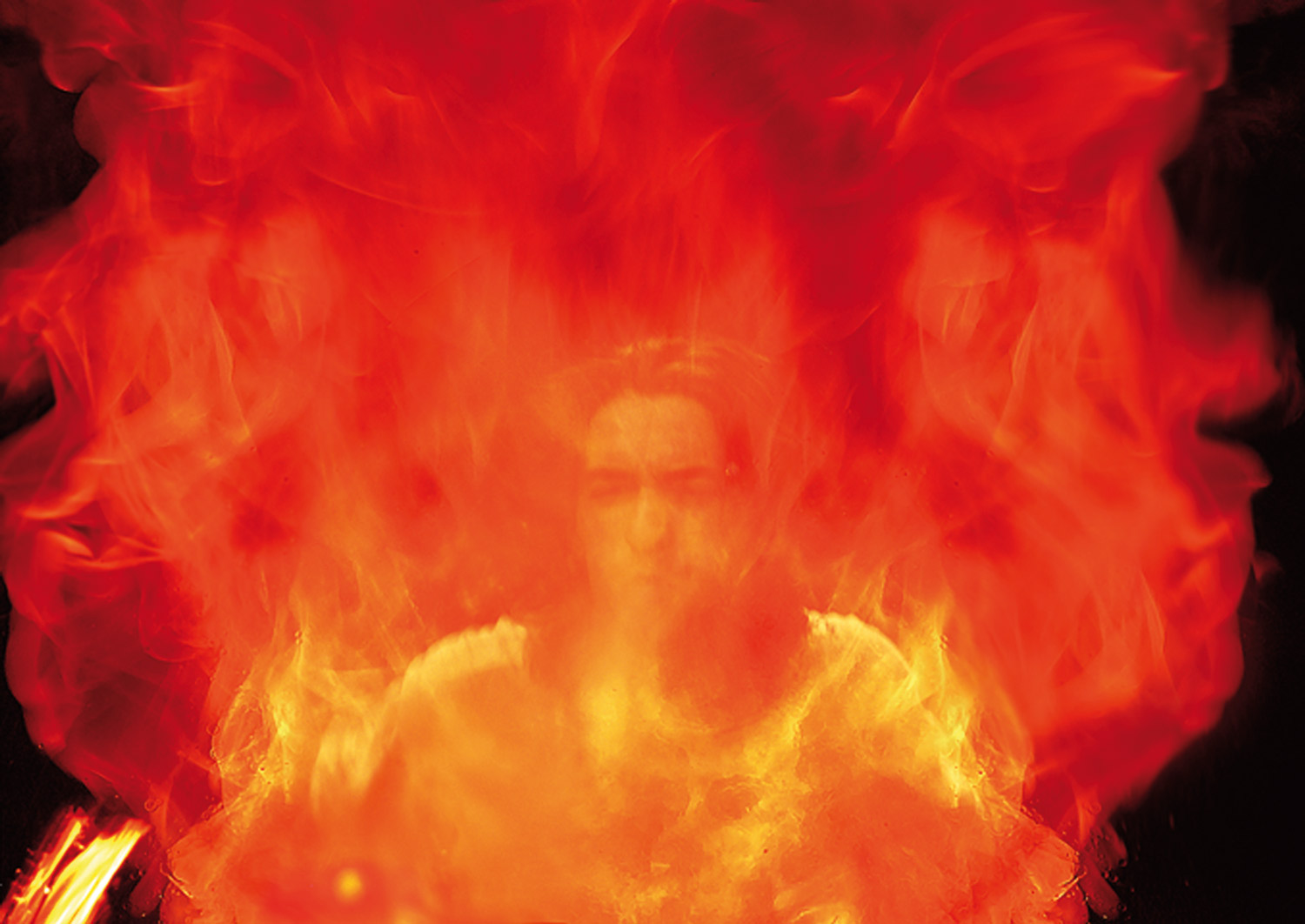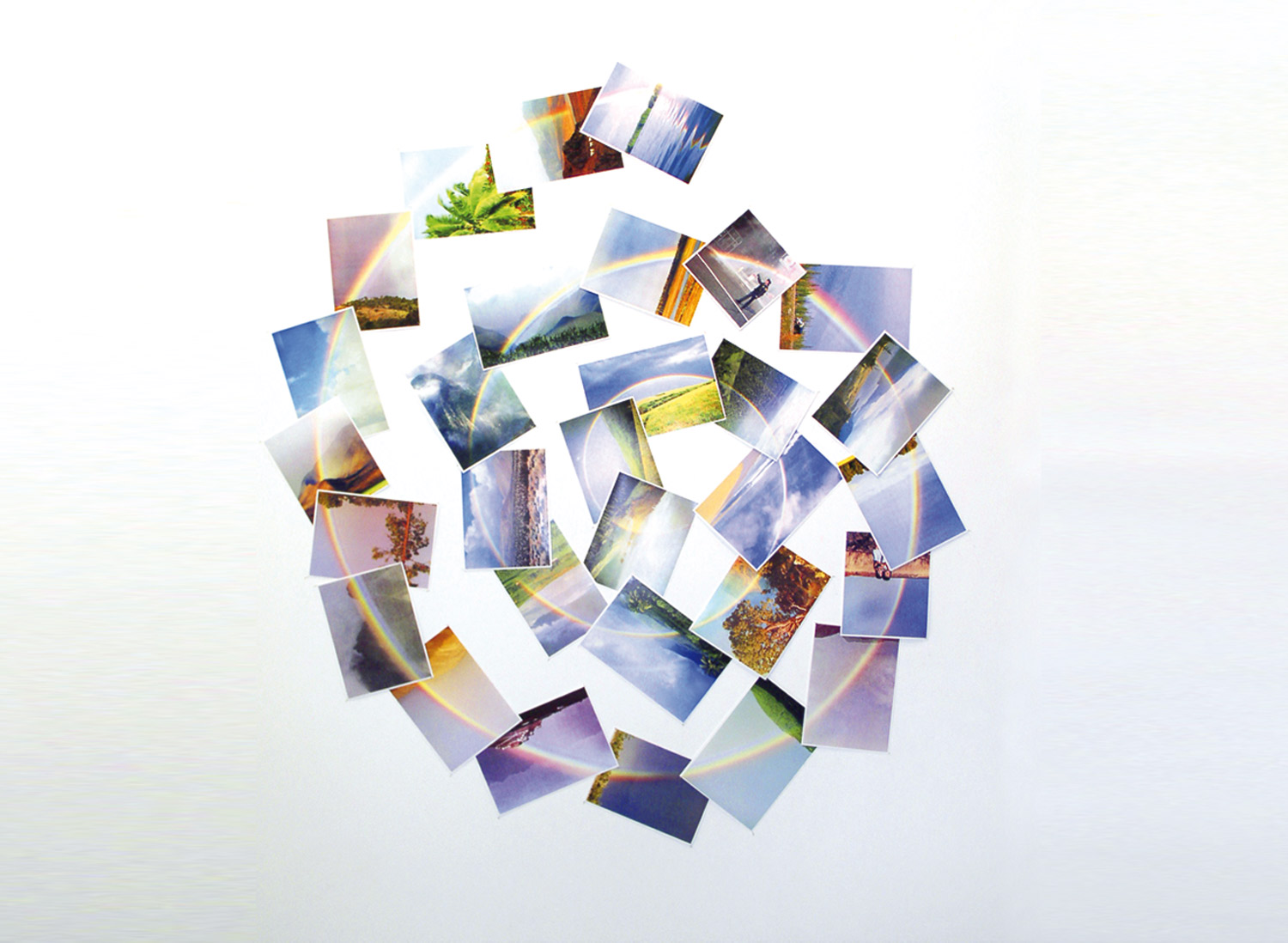
This summer, on the island of Syros, Greece, the Mexican artist Mario Garcia Torres breathed new life into the idea of the Museum of Modern Art Syros (MOMAS), the museum the German artist Martin Kippenberger had created in 1993 in a ruin of a facility that was once designated to become a slaughterhouse. Ten years after Kippenberger’s death, Garcia Torres, together with Locus Athens, a group of local curators, reactivated the site as an exhibition space by presenting a show in this place, which is currently in use as a wastewater treatment plant. The group produced a large poster for the show — Kippenberger style — which was pasted around Athens and Syros announcing that the museum had opened up again. The idea was to encourage the local community to take up Kippenberger’s idea of a “do it yourself” museum and create a model in which the water purification and art functions could co-exist in the future.
In his work, Garcia Torres, who has been active as a museum curator and who sees his work against the backdrop of historical conceptualism, has reflected consistently on museum politics and on “ways to rethink the museum.” At this year’s Venice Biennale one of his contributions was Carta Abierta a Dr. Atl (Open Letter to Dr. Atl) from 2005. In this work, the artist addresses an issue that evokes heated debate in the Mexican art scene: the planned installment of a Guggenheim Museum branch at Barranca de Oblatos, near the city of Gualdalajara. In a fictive letter written to the Mexican academic painter Gerardo Murillo “Dr. Atl” (1875–1964), displayed over footage of Barranca de Oblatos, Garcia Torres asks the painter to imagine the implications of aggressive multinational museum politics for this scenic canyon landscape that was often painted by Dr. Atl.
Another recent work that questions the museum as a cultural agency and as a place for the presentation and reception of art is A Brief History of Jimmie Johnson’s Legacy (2007). In what he himself describes as a “video-essay,” the artist studies, via visual quotes from art and film history, codes of conduct in the museum environment. In a recent presentation at the Stedelijk Museum CS in Amsterdam, the video was combined with the slide-based work Preliminary Sketches from The Past and for The Future (Stedelijk Museum) (2007), showing a series of actions performed by Garcia Torres together with a group of extras in the empty, soon-to-be-renovated rooms of the museum. According to the artist, the actions function as blueprints for “previous and potentially upcoming works” in which the museum building is to be used in unconventional ways. We see visitors running and cycling through the galleries, gathering together in odd places, measuring a room with someone’s body or walking straight into the wall in an attempt to “flip over the white cube.”
Martijn van Nieuwenhuyzen: Throughout your work you reference the legacy of historical conceptualism, even if only very loosely. How do you position your practice in regard to this tradition?
Mario Garcia Torres: I could implement those strategies in a very literal way, but most of the time I don’t use them in a strict manner, making sure my work doesn’t really become a remake of the conceptual story but more like a second rehearsal — or a second tryout — of the way those practices functioned. Hopefully it just does not all stop with being a replay and some open spaces are created to understand those practices in a less defined framework. In that way it becomes clear that the concern is not only with conceptual issues but also, for instance, with current social problems.
Now, historical conceptualism to me is incredibly interesting and a source of inspiration, but we have to acknowledge that this kind of art was done in a specific context and it served very specific goals. The so-called ‘hardcore conceptual artists,’ for example, were fundamentally trying to legitimatize a different way of conceiving art, which for us is no longer a discussion. It has become a strategy, almost a matrix to do other work, to ‘contaminate’ those practices with other discussions. Already at the end of the ’70s and early ’80s, ‘conceptual art’ started to become a more abstract entity and a more directly politicized issue. I hope to be furthering this kind of thinking, from a different perspective that time can give. In a way, I feel like I am not redoing but rehearsing history, as if trying to go beyond its conceiving moment, in order to test it again, and to see how much those movements can still have an effect back and forth.
MVN: The term ‘neo-con’ has been coined for a generation of neo-conceptual artists. What do you think about such labels?
MGT: There have been neo-conceptual artists since the ’80s. I think all these labels are quite problematic. If it is clear that its usage suggests an increasing enthusiasm for a specific kind of art, it is also very telling of people’s need to classify practices for easier handling and marketing. I recently participated in a show in New York that was entitled “neo-con.” When I first saw the title I must admit I was quite scared since in the US it is used for talking about a very specific fraction of politically conservative thinking: the neoconservatives. But in reality the show couldn’t of course have been more distant from that idea. In any case, I think the real question that this enthusiasm should evoke is why there are so many artists looking back at these quieter, almost cameo-like narratives from the recent past.

MVN: As you state that you want to imbue conceptual strategies with social issues, what are the specific ideas that you want to bring into discussion?
MGT: Without trying to narrowly label and frame my work, I could say that it is informed by so-called conceptual art practices and is interested in looking at the implications that such artistic practices involve. I am interested in a broad range of issues concerning the way art functions, from questioning the way we see museums, and the role of artists in society to the way art history is constructed — with a focus on smaller or forgotten narratives. But the overall perspective of my work is to imagine that by rethinking the function of art one can touch upon actual discussions and problematics.
One recent series of works that more literally touched upon social constructions and taking an art-historical moment as a starting point was created as a result of a project I did around the One Hotel that Alighiero Boetti had opened during the ’70s in Kabul, Afghanistan. The main work was entitled Share-e-Nau Wonderings (A Film Treatment) (2006). In essence the work is a sketch for a film script delivered in the form of short notes addressed to Alighiero himself. The story is set in late 2001 and written by me in the first person. It describes the author ‘wandering’ the streets of Share-e-Nau, the neighborhood in Kabul where the hotel was, looking for the building in order to use it as a film location. Overall the text becomes a script that looks for the locations to shoot the story it describes.
This hopeless action of looking for the hotel — the building presumably disappeared twenty years earlier, when the country was fighting against the Soviets — becomes an excuse to talk about the current political situation, as well as to question Boetti’s interests in the area. The rhetoric of this search for something that does not exist opens up a lot of questions and allowed me to contemplate the situation there. The absence of Boetti and the hotel are somehow framed by the disappearance — or the apparent reluctance of the coalition forces to complete the capture — of Osama bin Laden, and to think about to what extent their presence was in each case something of an imposition on the context.
The same group contains a piece in which I remade a work by Boetti. In his original performance from 1970, the title of the piece, Oggi è venerdì ventisette marzo millenovecentosettanta (Today is Friday the nineteenth of March nineteen seventy), was written twice on the wall, in ordinary and mirrored writing simultaneously until his two arms were fully stretched. In 1974 Boetti made the piece again, but this time the phrase was Ciò che parla in silenzio è sempre il corpo (The body always speaks in silence). I remade this work entitling it Today… (News from Kabul) in 2006. The idea is that every time the piece is made, you would have to check the papers and see what the latest news from Kabul is, and this becomes the text to be written on the wall. Every time the work is installed, there is a new phrase.
One of the things I discovered when I was doing my research for this project, was that the Iraq situation takes all the attention away from what is happening in Afghanistan, and this becomes a problem not only in terms of the lack of international political intervention but also the lack of humanitarian aid. There are actually only three agencies from the western world that have journalists covering the area, which are the ones I check for executing the piece. The work has been shown now several times and of course most of the time it is bad news…
MVN: Despite such serious subject matter, there is also a light and maybe humorous side to your work. It might be just in the tone of voice of the person who narrates the story in a video or in the use of some sort of tourist joke, like in the slide piece Some Push, Some Hold, and Some Don’t Even Know How to Take a Picture (2004).
MGT: I would not call it humorous. What surrounds most of the work is some sort of ‘defeated rhetoric’ that articulates itself in the form of a text or in the way the images and visual rhythms are constructed. You could describe it as a sad position in relation to history and the everyday. This also relates to my interest in how we rethink history and conceptual art. In the early ’70s artists were idealistic and hopeful. They probably thought that their art was going to have an immediate impact and change politics. It indicates that then the persona of the artist was, at least more than today, understood as a public persona. We are losing that position more and more. Knowing that what I create will have little or no direct impact is already implicated from the very start. But maybe that also leaves space for others to discuss it, instead of steering its interpretation toward an authoritarian point of view.
I have to recognize that the images in Some Push… are quite funny. But hopefully after a laugh also other things become apparent, like the implications of its endless repetition. The re-circulation of that photograph taken by many people changes the meaning of the monument (in this case the tower of Pisa) and the relation we have to it. “What is the tower of Pisa for, if not to take that picture?” someone in those pictures could say. Those historical landmarks become only an excuse for taking a picture, and that kind of behaviour can come off as pretty funny as well.
MVN: This idea of a collective memory based upon the circulation of images in popular film and art seems to be quite significant in the making of your work.
MGT: The first work I made thinking about this was Some Places I Had Seen Before Moving to L.A. in 2005. This film is in itself an action, an everyday gesture of driving through Los Angeles in an unsuccessful search for the image of the city that I had in my mind before moving there. That image was constructed through my experience of seeing either films set in Los Angeles or reproductions of conceptual art works that were made there. At the end it is a collection of sites, which on film almost resembles a road movie. It’s a series of very different locations. From the place where Douglas Huebler made a mark on the sidewalk for his Variable Piece No. 11 to the bank that is robbed by Al Pacino in Heat — which is actually across the street. The park where Robert Barry released Krypton in 1969 for his Inert Gas Series is shown alongside the park where Jack Nicholson spotted the villain of the historical film Chinatown, and the apartment of The Karate Kid is shown alongside apartments that Ed Ruscha had photographed for his apartments book. It is not only the circulation of images that interests me but also the way fact and fiction could coincide as representations and be discussed in the same terms. In other words, I am trying to say that each action that happens in a film, for example, has its own implications, the same way that happens when the image of a work of art is reproduced.

MVN: Your new video A Brief History of Jimmie Johnson’s Legacy again shows examples from art and cinema, this time focusing on slightly anarchistic forms of behavior in museums. What is your interest in the deranging of museum rules? Should we see it as a form of institutional critique?
MGT: To think about the museum itself is a very fundamental thing to do, more so if we take into account the current discussions in art and all the less object-oriented practices. And also if we think of different uses for the institution besides the one that it was designed for. I worked as a curator myself some years ago, and about three years ago I founded a museum in Mexico — the Museo de Arte, Sacramento. It is quite an abstract idea. It is more of a conversation than a building. My museum is located on a piece of land in the north of Mexico, quite far away from any airport. I was interested in choosing that location because I wanted to ask artists to think about the museum in a more abstract and ‘remote’ manner and also in a less defined way. Even the land piece itself is not clearly demarcated. There have been legal disputes about the borders of the land for a long time. I have asked artists to think about works that can happen in that space. It is a real museum, but it does not have walls, ceilings or whatever. It is a living archive for art practices, not a space for storing objects. I wanted to create a platform where artists really have the chance to rethink the idea of the museum. The project is about art and life, about defining where a work starts to be a work and where not. Because of the abstract nature of it all it has become a collective discussion. There are only a few works in the collection, most of them are in the form of instructions or have the status of a project. But maybe I should stop talking about it there, since the story might call for a more concise picture, which it is not now, and it might — as I imagine — never be.
MVN: Well, then perhaps you could talk some more about the position of the institution of the museum in the framework of your ‘documentary essay’ A Brief History…
MGT: It contains clips of artists’ actions but also Hollywood footage that is almost stupid, that is already made as a parody of art. The core of the piece is the video recording of an action that I recently staged at the Museo Nacional de Arte in Mexico. It is a re-enactment of this record-breaking visit to the Louvre that Godard introduced in his film Bande à part (a.k.a. Band of Outsiders) from 1964 and which was taken up again a couple of years ago by Bernardo Bertolucci in The Dreamers. What you see is a very simple gesture, which is framed in historical and contextual terms by the thoughts of a single participant. That is why I looked for a special type of documentary voice-over person. At the same time the actual work is a remake of something that didn’t really happen or that only happened in fiction. Jimmie Johnson, of course, does not exist; it is a name that Godard probably made up for the story of Bande à part. For me it was interesting to take this minor narrative from Godard’s film and to put it into circulation in the art arena. The actual work is not only about the Godard film and the repetition of that episode of the film, but also about other films where slightly exaggerated or unconventional gestures in museums are portrayed. Somehow my piece suggests that they could also be understood as art and have a potential meaning in the art discussion.
But to answer your question: I am interested in the piece itself becoming a trigger not only for rethinking the museum itself but also for the way a person can make use of the institution to his or her advantage. In that sense it was important for me to show that doing an action in a museum sometimes may have a broader resonance. As a participant you might also encounter the world outside quite differently after doing it, as if breaking the rules inside would give you a feeling of strength when you leave the museum. In that way one could think that its genealogy could be traced back to what we know in the arts as institutional critique, but the main difference here is that this one presents itself almost as a personal thought and not as a definitive critical statement.

